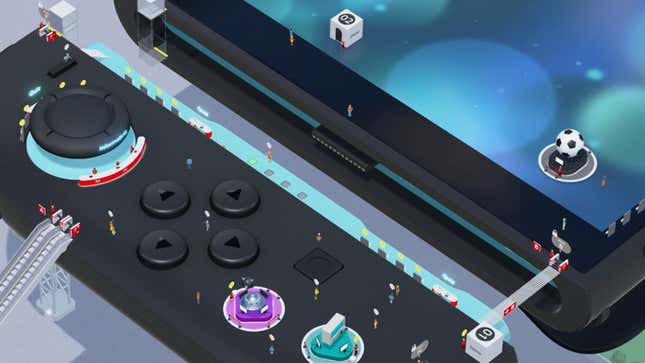
Nintendo has remained tight-lipped about the chip powering the Switch 2, but thanks to Nvidia we now have a better idea of what it is and the next-gen features it will support. Those include DLSS, ray tracing, and Variable Refresh Rate in handheld mode for games that choose (or manage) to support them.
According to the chip manufacturer, the new hardware is “powered by a custom Nvidia processor featuring an Nvidia GPU with dedicated RT Cores and Tensor Cores for stunning visuals and AI-driven enhancements.” This equates to “10x” the graphical performance of the original Switch released in 2017, or at least that’s what the company, fond of lofty and occasionally misleading promises, is currently boasting.
In a new post over on Nvidia’s website, it confirmed things we already knew from yesterday’s Switch 2 Nintendo Direct like 4K gaming in TV mode, up to 120fps at 1080p in handheld mode, HDR support on the LCD screen and TV mode, as well as AI upscaling to “sharpen visuals and smooth gameplay.”
But the chip maker also went into more detail on other features the Switch 2 can support even if they don’t end up making their way into every game. The big one is Nvidia’s Deep Learning Super Sampling (DLSS) which boosts image quality without sacrificing framerate. It’s become a cornerstone of PC gaming and one of the main ways rigs punch above their weight for running high-end games.
The Switch 2 will also be capable of ray tracing, a feature still somewhat rarely seen in console gaming in practice, as well as Nvidia G-Sync’s Variable Refresh Rate in handheld mode to make performance and image quality more smooth using AI. The company also claimed the Switch 2's GPU tensor cores do all this while “keeping power consumption efficient.” Exactly how efficient remains to be seen.
Nintendo recently revealed the Switch 2's battery life is even worse than the original Switch at the low-end. How all of these features work out in practice, and in the hands of developers, will be the real test. Once the Switch 2 is out in the wild for real we’ll have a better sense of how it operates after hardware enthusiasts do teardowns and show us exactly what’s inside.
.

